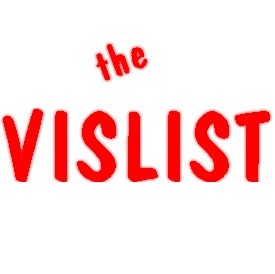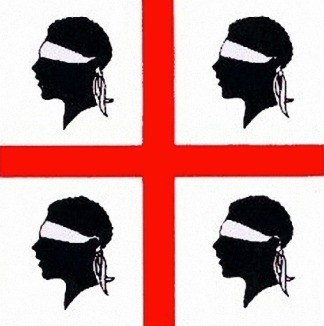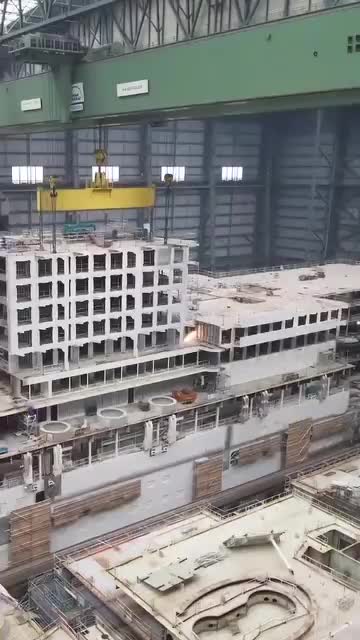Copy Link
Add to Bookmark
Report
VISION-LIST Digest Volume 12 Issue 16

VISION-LIST Digest Thu Apr 08 14:58:54 PDT 93 Volume 12 : Issue 16
- ***** The Vision List has changed hosts to TELEOS.COM *****
- Send submissions to Vision-List@TELEOS.COM
- Vision List Digest available via COMP.AI.VISION newsgroup
- If you don't have access to COMP.AI.VISION, request list
membership to Vision-List-Request@TELEOS.COM
- Access Vision List Archives via anonymous ftp to FTP.TELEOS.COM
Today's Topics:
Dalmation grouping picture
Re: database of handwritten digits, words, and ZIP Codes
Looking for a commercial structured light system
Information sought on purchasing right equipment for 3-D vision
Neural Networks And Image Restoration
Summary: Segmentation by optimization - references
Motion unsmearing: Paper available
CFP - 10th Israeli Symposium on AI and Vision
CVPR '93 tutorial schedule
Call for papers, NAFIPS'93
----------------------------------------------------------------------
Date: Thu, 8 Apr 1993 14:52:00 -0700
From: Philip Kahn <pkahn>
Subject: Dalmation grouping picture
I am trying to find out what the copyrights and usage restrictions are
for the Dalmation visual effect photo. It is a binarized photo of a
Dalmation against a mottled background, and only portions of the dog's
face are available cues. When you tell a person the image content,
recognition pops in quickly; otherwise it can take a very long time
for recognition.
I know that the photo was taken by R.C. James but that is all. Your
pointers are appreciated. We are trying to use it for the cover of an
upcoming proceedings.
thanks,
phil...
------------------------------
Date: Thu, 8 Apr 93 14:34:01 EDT
From: hull@cs.buffalo.edu (Jonathan Hull)
Subject: Re: database of handwritten digits, words, and ZIP Codes
In response to the following comment published in
VISION-LIST digest 12.15:
> It's nice that someone has transcribed this data to CD-ROM.
> The USPS has offered it for years, but on 1/2" open reel tae.
The data on the CDROM is totally different from any data that was ever
distributed on 1/2" tape. That is, the intersection is completely
empty.
Jon Hull
hull@cs.buffalo.edu
------------------------------
Date: Wed, 7 Apr 93 09:42:56 NZS
From: michael@auck.irl.cri.nz (Michael Rygol)
Subject: Looking for a commercial structured light system
The Machine Vision Team at Industrial Research Limited is looking to
purchase a commercially available structured light system in the very
near future.
At this stage we are looking for information and opinions/experiences
from both vendors and users.
The system will be used for industrial inspection research and
development.
Ideally, we would like a computer controlled laser (or white light)
projection system for either the VMEbus or SBus. Variable pattern
generation (for example, varying numbers of stripes and spacing) would
be an advantage.
Bundled data processing software (for example to produce a calibrated
depth map) would be a big plus. The range of operation is to be 1-2m.
Please reply to my email address. I will provide a collated reply to
the vision list if there is sufficient response.
Thanks in advance.
Michael Rygol Machine Vision Team
E-mail: michael@auck.irl.cri.nz Industrial Research Ltd
Phone: +64 9 303 4116 PO Box 2225
Fax: +64 9 307 0618 Auckland, New Zealand
------------------------------
Date: Wed, 7 Apr 93 13:16:15 EDT
From: Shoupu Chen <chen@asel.udel.edu>
Subject: Information sought on purchasing right equipment for 3-D vision
We will be working on 3-D information extraction using computer vision
for rehabilitation robotics. It is proposed to use a laser scanner as
an active light source to scan objects in the 3-D environment and
extract useful numerical information about those objects through the
camera and the image processor. We have been contacting Imaging
Technology, Inc.; and we'v been recommended to purchase Series 150/40
Modular, High-Performance Vision Processor. This vision processor
provides nice image processing functions but no3-D information
extraction facilities. Of course, we can make our own program to do the
job; but we'd like to hear what researchers in this area think about
choosing the right equipment including the laser scanner, the camera,
and the image processor. Please e-mail your suggestions to
chen@asel.udel.edu
Thank you very much.
Shoupu Chen
Applied Science & Engineering Center
University of Delaware
PO Box 269
Wilmington, DE 19899
------------------------------
Date: Thu, 8 Apr 93 12:39:50 +0300
From: Avraam Pouliakis - UNA <apou@leon.nrcps.ariadne-t.gr>
Subject: Neural Networks And Image Restoration
I am a first year Phd student in the department of computer science of
the University of Athens. My research area is in image processing. This
time I am working with image filtering: restoration and spectrum
estimation using AR and ARMA models.
I am looking for information on neural nets for
image filtering and spectrum estimation. Any articles, book titles or
software (specially in Fortran or C) will be wellcome.
Thanks in advance.
Abraham Pouliakis.
Division of Communication and Signal Processing
Department of Computer Science
University of Athens
Panepistimioupolis
Athens 15771, GREECE.
email: apou@leon.nrcps.ariadne-t.gr (Internet)
makis@GRATHUN1.BITNET (Bitnet)
------------------------------
Date: Wed, 7 Apr 1993 21:01:22 GMT
From: prabhu@cs.tulane.edu (Prabhu)
Organization: Computer Science Dept., Tulane Univ., New Orleans, LA
Subject: Summary: Segmentation by optimization - references
Keywords: image segmentation, optimization
Hello everybody,
Here's the full list of references I received against my earlier
query on "Segmentation treated as optimization". I have compiled only
the list of references from the responses and have edited out a couple of
abstracts.
Many thanks to Amnon Shashua, David Coombs, Andrew Stoddart,
Haisong Gu, Kenneth Thornton, Dario Ringach, Homer Pien, Christophe Fiorio,
Ales Leonardis, and Steve Avery for contributing.
Thank you for your interest and I hope you will find this useful.
- prabhu
1. Ales Leonardis
"Image Analysis using Parametric Models: Model-Recovery and
Model-Selection Paradigm"
Technical Report LRV-93-3, 1993, University of Ljubljana, Slovenia.
2. Blake A. and Zisserman A.
in Visual Reconstruction, MIT Press, Cambridge, Mass. 1987
3. Chou P.B. and Brown C.M
"Probabilistic Information Fusion for Multi-Modal Image Segmentation"
Proceedings of IJCAI-87, pp 779-782, 1987
4. Chou P.B. and Brown C.M
"Multimodal Reconstruction and Segmentation with Markov Random
Fields and HCF Optimization"
Proceedings of IUW-88, pp 214-221, 1988
5. Chou P.B. and Brown C.M
"The theory and practice of Bayesian image labeling"
IJCV 4, pp 185-210, 1990
6. Chou P.B., Brown C.M and Raman R
"A Confidence-Based Approach to the Labeling Problem"
Proceedings of WCV-87, pp 51-56, 1987
7. Geman D., Geman S., Graffigne C. and Dong P.
"Boundary detection by constrained optimization"
IEEE T-PAMI, pp 609-628, vol 12, no 7, July 1990.
8. Geman S. and Geman D.
"Stochastic relaxation, Gibbs distributions, and the Bayesian
restoration of images"
IEEE T-PAMI, pp 721-741, vol 6, 1984.
9. Haisong Gu, Minoru Asada, and Yoshiaki Shirai
"The Optimal Partition of Moving Edge Segments"
Proceedings of CVPR-93, (1993.6.15-17, New York)
10. Haralick R.M.and Shapiro G.L.
"Survey : Image segmentation techniques"
Computer Vision, Graphics, and Image processing, pp 100-132,
Vol 29, 1985
11. Mumford & Nitzberg
"?" (Sorry folks, I couldn't locate this one yet.)
IEEE T-PAMI, vol 14, 1992.
12. Pentland A.P.
"Surface Interpolation using wavelets"
European Conference on Computer Vision, (1992), 615-619
Springer Verlag, Lect Notes in Comp Sci 588, Berlin.
13. Mumford D. and Shah J.
"Boundary detection by minimizing functionals"
Proceedings of IEEE CVPR, pp 22-26, 1985.
14. Shashua, A. and Ullman, S.
"Structural saliency: the detection of globally salient structures
using a locally connected network"
Proceedings of ICCV-88, Tampa, FL, pp 321-327, December 1988
15. Shashua, A. and Ullman, S.
"Grouping contours by iterated pairing network"
in Advances in Neural Information Processing Systems 3, pp 335-341,
Ed. R.P. Lippmann, J.E. Moody and D.S. Touretzky, Morgan Kaufmann
Publishers, 1991
16. Terzopoulos D.
"The Computation of Visible-Surface Representations"
IEEE PAMI, 10(4) 417-438 July (1988).
17. Zucker W.S.
"Survey : Region Growing : Childhood and Adolescence",
Computer graphics and Image Processing, pp 382-399, Vol 5, 1986
Devaraya Prabhu prabhu@cs.tulane.edu
Dept of Comp Science
Tulane University
New Orleans
------------------------------
Date: Wed, 7 Apr 93 09:08:41 -0400
From: Jonathan A. Marshall <marshall@cs.unc.edu>
Subject: Motion unsmearing: Paper available
The following paper is available via ftp from the neuroprose archive at
Ohio State (instructions for retrieval follow the abstract).
Unsmearing Visual Motion: Development of Long-Range
Horizontal Intrinsic Connections
Kevin E. Martin and Jonathan A. Marshall
Department of Computer Science, CB 3175, Sitterson Hall
University of North Carolina, Chapel Hill, NC 27599-3175, U.S.A.
Human vision systems integrate information nonlocally, across long spatial
ranges. For example, a moving stimulus appears smeared when viewed
briefly (30 ms), yet sharp when viewed for a longer exposure (100 ms)
(Burr, 1980). This suggests that visual systems combine information along
a trajectory that matches the motion of the stimulus. Our self-organizing
neural network model shows how developmental exposure to moving stimuli
can direct the formation of horizontal trajectory-specific motion
integration pathways that unsmear representations of moving stimuli.
These results account for Burr's data and can potentially also model other
phenomena, such as visual inertia.
(In press; to appear in S.J. Hanson, J.D. Cowan, & C.L. Giles, Eds.,
Advances in Neural Information Processing Systems, 5. San Mateo, CA:
Morgan Kaufmann Publishers, 1993.)
To get a copy of the paper, do the following:
unix> ftp archive.cis.ohio-state.edu (or ftp 128.146.8.52)
login: anonymous
password: neuron
ftp> cd pub/neuroprose
ftp> binary
ftp> get martin.unsmearing.ps.Z
ftp> quit
unix> uncompress martin.unsmearing.ps.Z
unix> lpr martin.unsmearing.ps.Z
If you have trouble printing the file on a Postscript-compatible printer,
send me e-mail (marshall@cs.unc.edu) with your postal address, and I'll
have a hardcopy mailed to you (may take several weeks for delivery,
though).
------------------------------
Date: 7 Apr 93 15:14:47 GMT
From: edelman@wisdom.weizmann.ac.il (Edelman Shimon)
Organization: Weizmann Institute of Science, Computation Center
Subject: CFP - 10th Israeli Symposium on AI and Vision
Keywords: call, AI, vision
Call For Papers
10th Israeli Symposium on
Artificial Intelligence and Computer Vision
Tel-Aviv, December 27-28, 1992
The conference is the joint annual meeting of the Israeli Association for
Artificial Intelligence, and the Israeli Association for Computer Vision
and Pattern Recognition, which are affiliates of the Israeli Information
Processing Association.
Papers addressing all aspects of AI and Computer Vision, including, but
not limited to, the following topics, are solicited:
* Image Processing and Analysis
* Computer Vision, Applications, Robotics
* Biological Vision, Visual Perception
* Cognitive Modeling
* Pattern Recognition and Neural Networks
* Natural Language Processing
* Inductive Inference, Automated Reasoning, Planning and Search
* Knowledge Acquisition, Knowledge Theory, Logics of Knowledge
* AI and Education, AI Languages and Methodology
Submitted papers will be refereed by the program committee. Authors
should submit 4 copies of the full paper (in English). Accepted papers
will appear in the conference proceedings.
Papers should be received by the conference co-chairmen at one of the
following addresses by June 30th, 1992. Authors will be notified of
acceptance by September 15th 1992.
Vision: AI:
Dr. Ronen Basri Dr. Uri J. Schild
10th IAICV 10th IAICV
Dept. of Appl. Math. and Comp. Sci. Dept. of Math. and Comp. Sci.
The Weizmann Institute of Science Bar Ilan University
Rehovot 76100, Israel Ramat Gan 52900, Israel
ronen@wisdom.weizmann.ac.il schild@bimacs.cs.biu.ac.il
VISION Committee Members:
D. Weinshall Hebrew University daphna@cs.huji.ac.il
N. Intrator Tel Aviv University nin@math.tau.ac.il
N. Kiryati Technion kiryati@techunix.technion.ac.il
Z. Smilansky Orbotec zeev@orbot.co.il
Y. Halor Weizmann Institute toky@wisdom.weizmann.ac.il
R. Basri (Chairman) Weizmann Institute ronen@wisdom.weizmann.ac.il
AI Committee Members:
L. Manevitz Haifa University manevitz@mathcs2.haifa.ac.il
M. Golumbic IBM Scientific center golumbic@haifasc3.vnet.ibm.com
S. Kraus Bar-Ilan University sarit@bimacs.biu.ac.il
Y. Davidor Weizmann Institute yuval@wisdom.weizmann.ac.il
U. Ornan Technion ornan@techsel.technion.ac.il
S. Markovitz Technion shaulm@cs.technion.ac.il
J. Rosenschein Hebrew University jeff@cs.huji.ac.il
E. Gudes Ben-Gurion University ehud@bengus.bgu.ac.il
U. Schild (Chairman) Bar-Ilan University schild@bimacs.biu.ac.il
Dr. Shimon Edelman
Senior Researcher, Dept. of Applied Mathematics and Computer Science
The Weizmann Institute of Science, Rehovot 76100, ISRAEL
Net: edelman@wisdom.weizmann.ac.il, Fax: 972-8-344122, Phone: 972-8-342856
------------------------------
Date: Wed, 7 Apr 93 8:56:18 PDT
From: flynn@eecs.wsu.edu
Subject: CVPR '93 tutorial schedule
The following tutorials are being offered at the CVPR '93 conference.
Any tutorial with insufficient advance registration is subject to cancellation
(with full refund to those who did register).
Questions regarding individual tutorials may be directed to the presenters.
General questions about the CVPR tutorial program can be directed to Dr. Terry
Boult <tboult@cs.columbia.edu>. The CVPR advance program, registration form,
and other helpful information can be ftp'ed from
cs.columbia.edu:/pub/vision/CVPR93 .
Sunday 6/13/93
______________
8 am -- 12 pm
=============
Tutorial 1: HUMAN AND MACHINE COLOR PERCEPTION
Laurence T. Maloney
Center for Neural Science
New York University
ltm@cns.nyu.edu
Brill, Buchsbaum, Maloney and Wandell, and others have proposed algorithms that
permit vision systems to estimate information (analogous to color) about
surface properties despite changes in the spectral proerties of the
illuminant. These algorithms share strong assumptions about the range of
possible illuminants and possible surface reflectances present in a scene. I
will describe the models, review experimental tests of the assumptions
underlying them, and discuss their implications for human and machine vision.
1 pm -- 5 pm
============
Tutorial 2: PHYSICS BASED VISION
Shree K. Nayar
Computer Science Department
Columbia University
nayar@cs.columbia.edu
This tutorial will review radiometric concepts, optics and image formation,
image sensing, reflection and interreflection mechanisms, separation of
reflection components, shape recovery methods, reflectance and roughness
estimation, and object recognition based on physical properties.
Tutorial 3: VISUAL INFORMATION MANAGEMENT SYSTEMS
Ramesh Jain
University of California at San Diego
jain@celece.ucsd.edu
In this tutorial, we will first address the basic problems in the area of
content-addressable image databases. We address issues such as principles for
image organization, specification of image-based queries, and index keys for
image-based entities. Our goal is to present the state of the art in this new
emerging field.
Monday 6/14/93
================
8 am -- 12 pm
=============
Tutorial #4: OBJECT RECOGNITION WITH ALGEBRAIC GEOMETRY, INVARIANTS,
AND BAYESIAN METHODS
David B. Cooper and Gabriel Taubin
Brown University & IBM T.J. Watson
Research Center
cooper@lems.brown.edu
taubin@watson.ibm.com
This tutorial will show how concepts from algebraic geometry, invariant theory
and probability theory can be integrated in a computationally efficient
framework for object recognition and positioning. The following topics will be
covered: algebraic curve and surface fitting, algebraic and moment invariants
for recognition, covariants for position estimation, and asymptotic Bayesian
methods for robustness.
1 pm -- 5 pm
============
MDL METHODS IN IMAGE ANALYSIS AND COMPUTER VISION
Wayne Niblack
Machine Vision Group
IBM Almaden Research Center
niblack@almaden.ibm.com
This tutorial introduces Minimum Description Length (MDL) methods, describes
how to formulate a problem using them, and discusses the issues of
computational cost, choice of "language", and comparison with alternatives.
Numerous examples are given from edge detection, curve fitting, image
segmentation, feature selection, and object recognition.
3D OBJECT RECOGNITION SYSTEMS
Patrick J. Flynn
School of EECS
Washington State University
flynn@eecs.wsu.edu
This tutorial will explore each of the logical modules of model-based 3D object
recognition systems. A review of 3D sensors will be followed by coverage of
popular image feature types for 3D recognition, object modeling strategies, and
recognition paradigms.
------------------------------
Date: Thu, 8 Apr 1993 18:55:53 GMT
From: lhall@neuron1.arc.nasa.gov (Lawrence O. Hall -thru 6/1/93)
Organization: NASA/ARC Information Sciences Division
Subject: Call for papers, NAFIPS'93
Keywords: fuzzy, call, conference
CALL FOR PAPERS
1993
NORTH AMERICAN FUZZY INFORMATION PROCESSING SOCIETY CONFERENCE
August 22-26, 1993
The conference will be held in beautiful and historic Allentown,
Pennsylvania, USA.
The conference will consist of a combination of invited keynote lectures,
invited state of the art plenary sessions, and related contributed paper
sessions. Leading experts will provide the plenary talks. Full papers
are being solicited for the contributed sessions. Relevant exhibits are
also solicited. Example topics include, but are not limited to:
Fuzzy sets in Computer Vision, Fuzzy databases, fuzzy control, mathematical
programming, medical decision making, applications, neural networks and
fuzzy artificial intelligence, fuzzy hardware, fuzzy graphs, Intelligent
vehicles, approximate statistical decisions.
The paper and exhibit schedule is:
MAY 1, 1993 Authors submit three (3) copies of an Abstract
(100 word limit), draft of paper (5 page limit) or
description of proposed exhibit.
MAY 15, 1993 Notification of receipt
MAY 31, 1993 Decision on acceptance and mailing of instructions for
preparation of camera ready manuscript or exhibit.
JULY 1, 1993 Submission of camera-ready manuscript ( 5 page limit) or
exhibit.
All correspondence should be conducted through the general chair:
Prof. Marialuisa McAllister
3604 Gloucester Drive
Bethlehem, PA 18017
Phone: (215) 865-3187
FAX: (215) 861-1466
Please include full address and phone, FAX and email information on
the submission. Please also place your paper in a technical area from the
above choices. Special audio visual requirements should be noted.
Exhibitors need to include their space requirements.
Tutorials will be:
1. Basic concepts of Fuzzy sets, Fuzzy Logic and Fuzzy numbers, Marialuisa
McAllister, Moravian College, PA.
2. Fuzzy Neural Computing, Madan Gupta, Univ. of Saskatchawan, Canada
3. Fuzzy Statistics, Daniel Ralescu, Univ. of Cincinnati, OH.
Invited Keynote Lectures will be given by:
1. Lotfi Zadeh
2. Takeshi Yamakawa
3. Hiroyuki Watanabe
State of the Art Plenary Sessions:
1. Fuzzy sets in Computer Vision, James Keller, Univ. of Missouri-Columbia
2. Fuzzy Relational Databases, Maria Zemankova, NSF
3. Fuzzy Control Theory, James Buckley, Univ. of Alabama-Birmingham
4. Fuzzy Mathematical Programming, Augustine Esogbue, Georgia Tech.
5. Fuzzy Applications to Medical Decision Making, Donna Hudson, Univ. of
California, San Francisco.
6. Miscellaneous topics, Marialuisa McAllistor, Moravian College
7. Fuzzy Civil Engineering Applications, Jean-Lou Chameau Georgia Tech.
8. Fuzzy graphs, Marc Roubens, Univ. of Liege, Belgium.
9. Fuzzy neural networks and artificial intelligence, Ron Yager, Iona
College
10. Fuzzy sets in Industrial Engineering, Burhan Turksen, Univ. of Toronto.
11. Fuzzy Mathematics, Sergei Ovchinnikov, San Francisco State Univ.
12. Fuzzy Memory Devices, Takeshi Yamakawa, Kyushu Institute of Technology,
Japan.
13. Intelligent vehicle applications, Enrique Ruspini, SRI International,
Menlo Park, CA.
14. Approximate technology for Statistical Decisions: Tailoring the analysis
to fit the data, Thomas Whalen, Georgia State Univ., Atlanta, GA.
------------------------------
End of VISION-LIST digest 12.16
************************





















